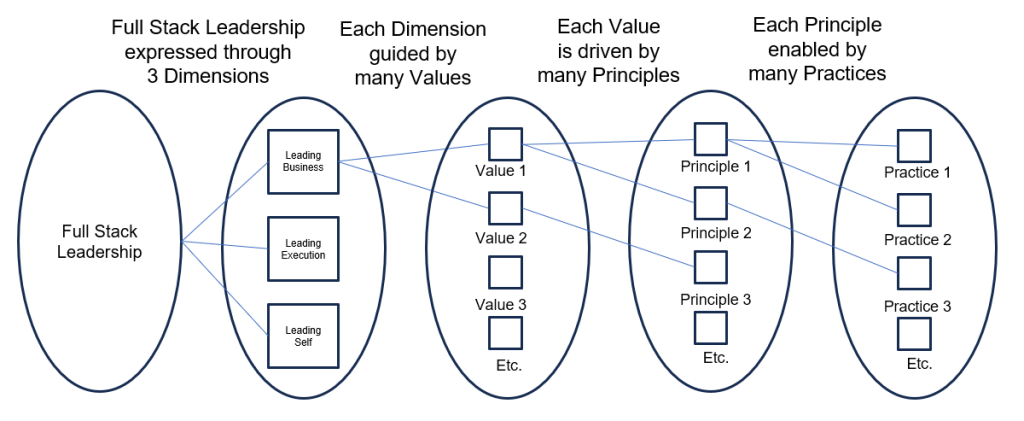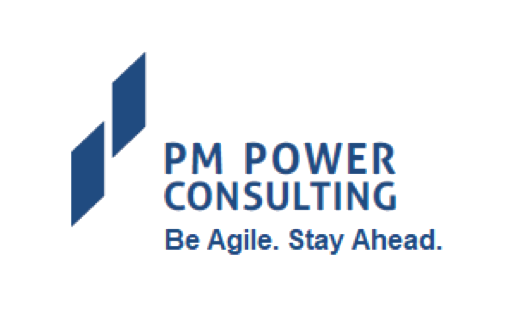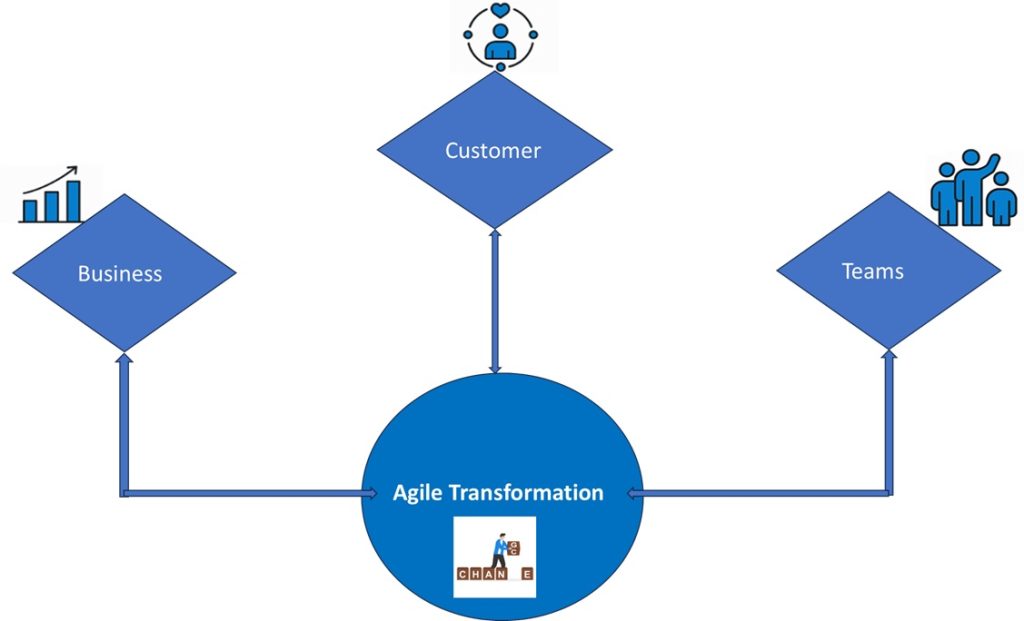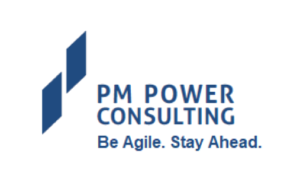Continued from Full Stack Leadership – Upcoming book from PM Power – Post I
The three dimensions of full stack leadership
In the book, Leading business entails creating an environment where the organization is able to understand, adapt and respond to the changing marketplace and market needs, customer asks, and competitor moves. It means continuous value delivery to stakeholders. Business excellence is driven by organisational agility, innovation, and high levels of quality, performance, and competitiveness. It is also driven by the people who lead the business. Ideating and creating business goals, deciding on the direction of the business, innovating, creating the capabilities, skills, and diversity required to run the business, establishing trust pipes with the stakeholders, providing continuous value to stakeholders are all done by business leaders.
Leading execution involves taking ideas put forward by the business and creating value with it– value for all stakeholders including customers, associates and shareholders. Execution here means much more than development and implementation. Bringing ideas to life, implementing them, taking them to market, testing them, improving them, letting them grow, and at the end of the day developing them from an idea to a true innovation by means of bringing value to the market and stakeholders – that is execution. Leading execution also includes leading the people in the execution. Leading the people in the execution means achieving required goals by working with others as a team using knowledge, skills, competence and understanding of how to engage, motivate and manage people. For this one must set the vision, strategy and objectives and enabling people towards achieving those. This does not apply to only one’s immediate team. It means managing customers. It means managing up – managing your managers and shareholders; managing sideways – managing peers and other stakeholders; and managing down – managing one’s team.
Leading self refers to the ability of an individual to effectively manage and direct their own actions, behaviours, and emotions. It encompasses self-awareness, self-regulation, self-motivation, and a strong sense of personal accountability. Leading oneself involves setting goals, making decisions, and taking responsibility for one’s actions and their consequences. It is a fundamental aspect of leadership development, as effective leaders must first be able to lead themselves before they can effectively lead others. Leading self means understanding and preparing for the exercise at hand – in short, imbuing oneself with the required emotional intelligence to lead the effort and transmitting these abilities to leaders down the line. And this needs understanding and employing mindful leadership or the ability to be present and having a non-judgmental and unbiased mind. This is what helps with developing empathy.
Values, principles and practices of the dimensions of leadership
For each dimension of leadership, the book identifies a set of values (beliefs and ideas) which should be internalized by leaders when they exercise their leadership. They are a set of beliefs that guide the decision-making and the actions of leaders. A leader adopts some values based on the business environment they find themselves in, to decide on how to operate and how to become a success. These values a leader adopts influences everything they do from stakeholder interactions to financial decisions. PM Power feels that these values are universal and fits the situations of leadership that we have come across, but when conditions or situations where the leadership operates changes drastically there may be a need to change the values. As an example, innovation or being innovative is a value that we think good leaders should have. But there could be leaders in particular situations where they feel that should not be innovative.

The book also identifies a set of principles that drive these values. Principles of leadership are objective truths that determine the outcomes of leadership behaviour. For example, Breaking tradition and finding trailblazing ideas is a leadership principle that is out there in the universe. If you believe in the value of innovation, you will have to adopt this principle. And for each principle, the book identifies a set of practices, or regular behaviors and actions, that needs to be followed by the leader to enable that principle fully. These practices may, too, change depending on the circumstance and the situation. The book identifies a set of practices which we feel are valid over most of the situations we normally come across. For example a practice that is needed to be implemented to enable the principle of Breaking tradition and finding trailblazing ideas is employ a business model that encourages innovation.
Thus, the book goes into the details of a total of around 48 principles and more than 200 practices.
There is a separate section on how some of the principles of leadership are affected by the new generative AI phenomenon.
Objective of the book
The objective of the book is to inform leaders and aspiring full stack leaders, for whom the book is intended, that leadership is not just about leading people. It actually involves leading the business and leading the execution of ideas through people. And finally, to drive home the point that these two aspects of leadership – leading business and leading execution (process and people) – will come to nothing unless a leader is able to lead self. Mastering leading self helps the leader jump the chasm to the next level of leadership. The book is packed with practical insights, proven principles, and actionable practices to help you become a strategic thinker who anticipates market shifts and drives innovation; lead and motivate your team to achieve exceptional results; develop your emotional intelligence and self-awareness for effective decision-making; and navigate complex situations and build resilience in the face of challenges.
Leadership can take on many forms. These different forms of leadership may require different mindsets and different thinking and may operate under different values and principles. Business leadership, technology leadership, military leadership, non-profit leadership, thought leadership, political leadership, and educational leadership are some of the many forms that leadership may need to take. This book focuses on business leadership along with some aspects of technology leadership.
Need for the book
The recent CrowdStrike issue brought to focus the need for high levels of quality leadership. On July 19th, 2024, CrowdStrike deployed an update of their Falcon system for Windows, which sits as a layer on top of the OS and provides endpoint detection and response capabilities. It continuously monitors devices for suspicious activity and if any is found, security teams can investigate and respond. This update came with a critical bug which crashed the Windows system. This bug caused computer disruptions worldwide, affecting critical business areas like banks, stock exchanges, airlines, and airports. It was clearly a bug and not a malicious cyber attack. To their credit, CrowdStrike quickly identified the issue, isolated it, and deployed a fix. They also advised users on how to resolve the problem on their systems. Their CEO apologized to their customers and partners and a senior vice president apologized to the US Congress.
This incident highlights the potential impact that software issues can have, even from reputable cybersecurity companies. I feel that sometimes even such reputed companies find it difficult to adopt some of the key values of leadership. When we focus on the business angle of leadership, while innovation was the reason CrowdStrike existed, in my view, looking at the situation from outside, clearly there were problems with customer and market focus (deploying code without adequate testing and QA), social responsibility (the common man was affected when banks, airports and such were affected) and organization brand/value (the brand value of the company was clearly affected). All these values were apparently affected. If you look at the leadership of execution, alignment to the vision of the organization was affected (providing a secure system environment), the leadership was not transformational (stakeholders’ power and influence were not fully identified and taken care of), there was no people focus (people were not coached well) and no lean thinking at all (created big wastes of commission). I think it is possible that the leadership stressed on hurriedness rather than on true Agility.
Such incidents stress the importance of a book such as this that deals with and helps leaders understand and apply the values and the principles of the three key aspects of leadership.
Continued in Full Stack Leadership – Upcoming book from PM Power – Post III
Note:
The following posts together give a complete summary of the new book from PM Power – Full Stack Leadership
- Background and introduction to the book – 1
- Background and introduction to the book – 2
- Background and introduction to the book – 3
- Synopsis of the book – Introduction
- Synopsis of the book – Leading Business
- Synopsis of the book – Leading Execution
- Synopsis of the book – Leading Self
- Synopsis of the book – AI





